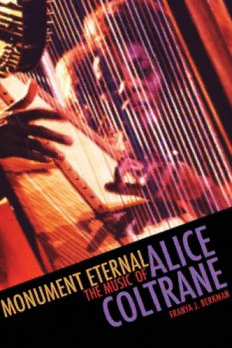
Monument eternal: the music of Alice Coltrane PDF
Preview Monument eternal: the music of Alice Coltrane
Monument Eternal This page intentionally left blank FRANYA J. BERKMAN 3 Monument Eternal THE MUSIC OF ALICE COLTRANE 3 wesleya n u nivers ity press Middletown, Connecticut Wesleyan University Press Middletown CT 06459 www.wesleyan.edu/wespress 2010 © Franya J. Berkman All rights reserved Manufactured in the United States of America 5 4 3 2 1 Library of Congress Cataloging-in-Publication Data Berkman, Franya J. Monument eternal : the music of Alice Coltrane / Franya J. Berkman. p. cm. —(Music/culture) Includes bibliographical references and index. isbn 978-0-8195-6924-0 (cloth : alk. paper)— isbn 978-0-8195-6925-7 (pbk : alk. paper) 1. Coltrane-Turiyasangitananda, A. (Alice) 2. Pianists—United States— Biography. 3. Spiritual life—Hinduism. I. Title. ml417.c746b47 2010 786.2092—dc22 2010016656 [B] Wesleyan University Press is a member of the Green Press Initiative. The paper used in this book meets their minimum requirement for recycled paper. We gratefully acknowledge the assistance of the ams 75 pays Endowment of the American Musicological Society. To my mother, Lisa, and my daughter, Sadie This page intentionally left blank Contents 3 Preface ix Acknowledgments xiii Introduction: Alice Coltrane as Turiyasangitananda 1 1. God’s Child in the Motor City 19 2. Manifestation 47 3. Universal Consciousness 64 4. Glorious Chants 94 Notes 111 Bibliography 119 Discography 127 Index 129 Illustrations follow page 46 This page intentionally left blank Preface 3 In Search of Divine Songs My fi rst exposure to the music of Alice Coltrane occurred while I was relax- ing in savasana, or the corpse pose, on the fl oor of a Brooklyn yoga studio in the winter of 1993. The instructor started the cassette player, and out came the rich sound of a black woman’s tenor voice chanting the name of Siva, accompanied by a Wurlitzer organ and a small violin section. The music expressed an unusual combination of peace and longing. It was pen- etrating, soulful, and unlike anything I had ever heard. After class, I asked the instructor for the name of the artist. “Alice Coltrane, Divine Songs,” she answered. “Alice who?” I asked. “Coltrane,” she replied. “Coltrane—like John Coltrane?” I inquired. “Yes, his wife,” she confi rmed. For weeks, I searched intently for Alice Coltrane’s music but could fi nd nothing in any of the major record stores in Manhattan. My instructor kindly made me a cassette copy of Divine Songs, which I listened to regularly until I loaned it to a friend, who lost it. I had nearly forgotten about Alice Coltrane when, seven years later, I found two of her old lps, Journey in Satchidananda and Radha Krsna Nama Sankirtana, in a colleague’s exten- sive record collection. I listened again to this singular musician. In addition to Alice Coltrane’s piano and harp improvisations, these recordings fea- tured Pharoah Sanders’s soprano saxophone, the hypnotic drone of the tamboura, and what sounded like a gospel choir singing the praises of Krishna. I was reminded of the Siva chant I had heard, and I began search- ing anew for her music. At that time, I was a graduate student in ethnomusicology at Wesleyan University, and I examined discographies, jazz dictionaries, databases, and the World Wide Web. In the process, I learned that Alice Coltrane had played piano with her husband, John Coltrane, in the last years of his life. ix
